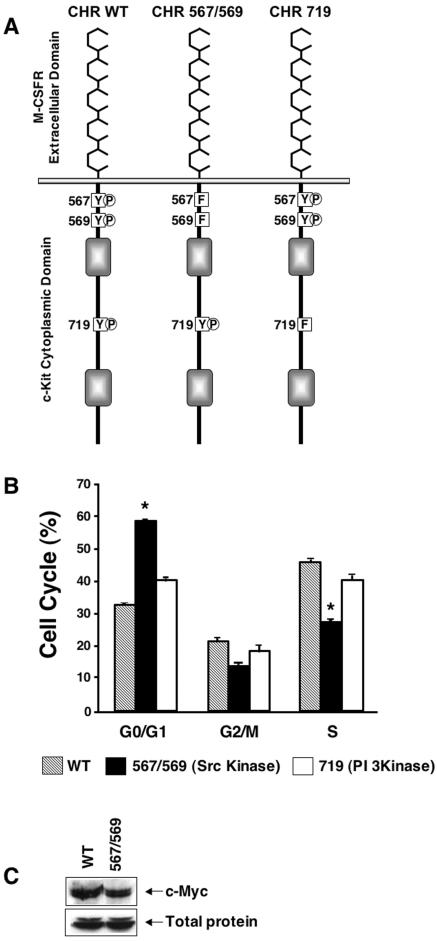FIG. 4.
Inhibition of cell cycle progression and expression of c-Myc by mutating the binding sites for Src family kinases in c-Kit. (A) Schematic structure of wild-type (WT) and mutant CHRs. The c-Kit CHR includes the ligand-binding domain of the human M-CSF receptor, the transmembrane, and the cytoplasmic tail of the c-Kit receptor. In the mutant c-Kit CHRs, tyrosines (Y) at the indicated positions have been changed to phenylalanine (F). (B) G1E-ER2 cells expressing wild-type CHR, CHR mutated at position 567/569 (CHR 567/569), or CHR 719 were cultured in the presence of M-CSF (200 ng/ml). After 48 h, cells were harvested, and cell cycle analysis was performed by propidium iodide staining followed by FACS analysis. Bars indicate the percentage of cells in G0/G1, G2/M, and S phases of the cell cycle ± SD of one of two representative experiments performed in triplicates. Asterisks indicate P < 0.05 for CHR 567/569 versus wild-type CHR or CHR 719. (C) G1E-ER2 cells expressing the indicated receptor (wild-type CHR or CHR 567/569) were cultured in M-CSF (200 ng/ml). Cells were collected and lysed after 24 h, and an equal amount of protein was subjected to Western blot analysis with an anti-c-Myc antibody. One of three experiments with similar results is shown.

